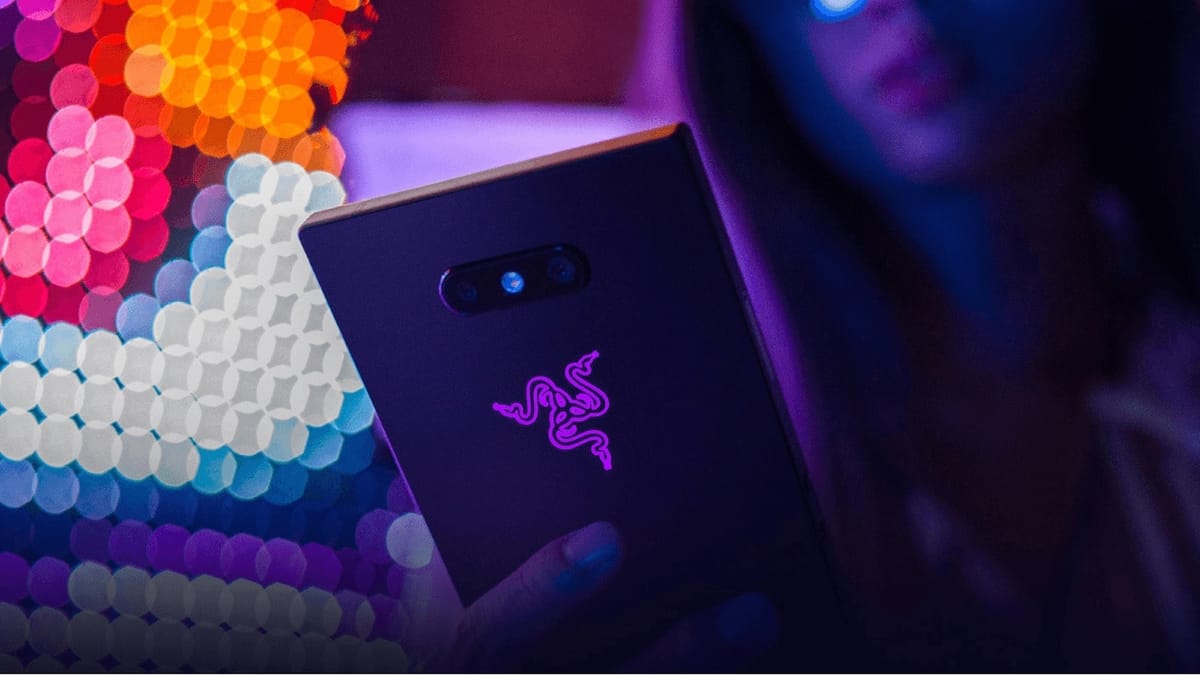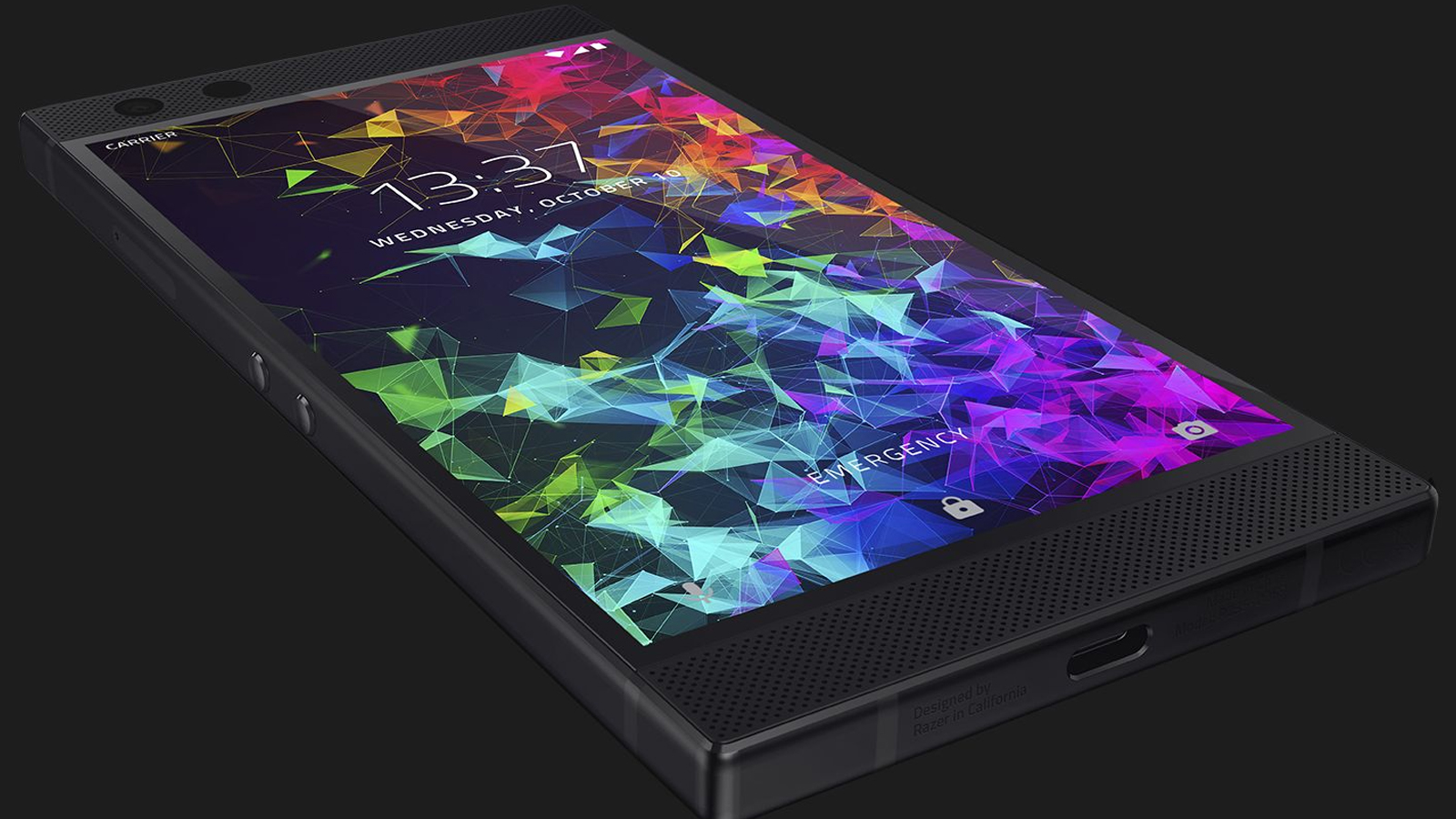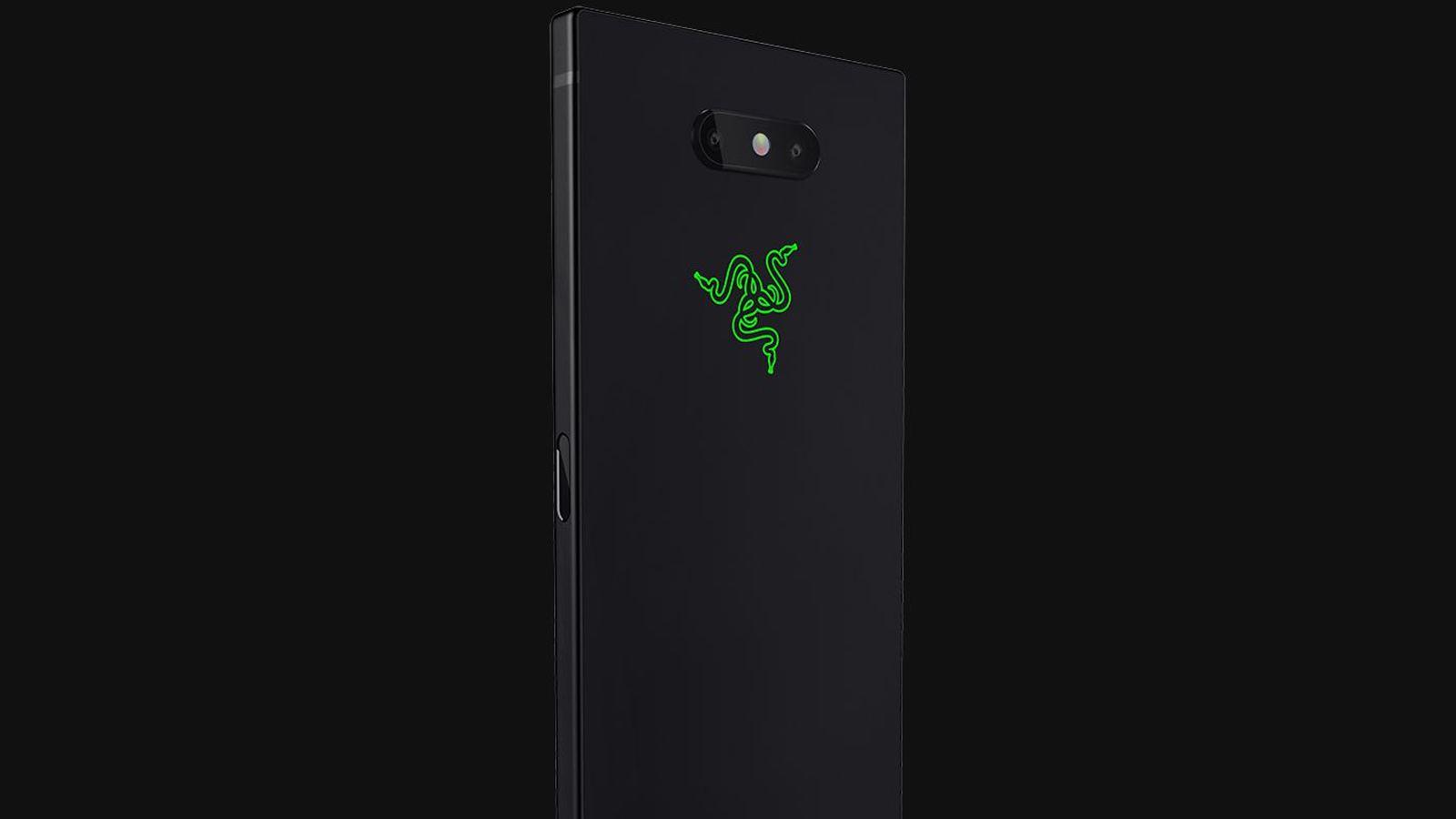
I have a love/hate relationship with my Google devices. On one hand, they get updates immediately, which means I’m not stuck behind a provider’s willingness to continue supporting a platform. On the other hand, Google’s willingness to support their own devices is spotty at best. Problems that I had on my Nexus 5 were present on the Nexus 6, and then jumped to their Pixel and Pixel 2 phones. While Google has recently released the Pixel 3A, I thought it might be a good time to look into something built for mobile gaming, but with all the power of a Google first party device. I’ve recently switched my routers to the Razer Sila (review), so why not give the Razer Phone 2 a look?
What’s under the hood?
As you may have guessed from the name, this is Razer’s second bite at the apple for the phone market with Razer Phone 2. Squarely aimed at the mobile gamer (“Don’t you guys have phones?!” – Blizzard), the Razer Phone 2’s hardware configuration is all about improving games: making them load faster, look better, and sound amazing. It’s a lofty goal, and nearly every gamer-focused phone has failed to deliver on it. Could this be the first truly successful mobile gaming phone, or will this be the next NGage side-talking taco?
If there’s one aspect Razer focused on hardest, it is the screen on the Razer Phone 2. First and most obvious, it is bright and high resolution. Coming in at 1440×2560 resolution (551 pixels per inch, if you prefer), the screen measures 5.72 inches in height and uses the same indium gallium zinc oxide technology present in the Razer Blade 15” laptop I reviewed last year (though obviously the touchscreen variety), and is protected by a healthy slate of Corning Gorilla Glass v5 on the front and the back. It also sports a silky smooth 120 Hz refresh rate — a feature almost entirely unique to this phone.
The refresh rate feature has come up in Apple’s debut of the iPhone XS, but before we move on from this point, I’d like to demystify the difference a bit. The iPhone XS’s announcement of a 120 Hz screen threw fruit fans for a loop because they assumed that this meant the refresh rate would be 120 Hz. In point of fact, the screen does have a 120 Hz sampling rate for measuring touch inputs, but the refresh rate is half that at 60 Hz, like most phones. As any gamer will tell you, when the input and the output aren’t running the same speed, you get the worst of the two as a result.
The graphics chip in the Razer Phone 2 is an Adreno 630 from chip giant Qualcomm. If you’ve kept up with the chip market, you might know that the 630 represents the near-top of the discrete phone GPU chip food chain (there is a 640 that pumps out 34.13 GB/s versus the 630’s impressive 29.9 GB/s thanks to faster RAM), being powered by the Qualcomm Snapdragon 845. This same processor also powers the Samsung Galaxy S9 Plus ($659) and Note 9, Sony Xperia XZ2 ($599), Asus Zenphone 5Z ($799), Pixel 3 ($799) and Pixel 3 XL ($899), OnePlus 6 ($529), and the Asus ROG Smartphone ($899). This processor features eight cores at 2.8 GHz, providing plenty of power to handle even the most intense gaming experiences with ease. Couple it with 8GB of Low Power DDR Generation 4 (LPDDR4 uses 0.6 volts versus the previous generations 1.1 volts of power), and you’ve got enough to handle desktop-level experiences on a mobile platform. Suddenly the idea of Diablo Immortal being a fully-baked console-like experience doesn’t sound so far fetched.
While I’ll be digging into game performance later in this review, it’s worth pointing out that Razer wants to curate this 120 Hz, silky-smooth gameplay experience, and they’ve worked with Google to do so. In the Google Play Store there is a marked section with games that take advantage of the 120Hz screen. Currently there are over 100 games that support this mode, with more being added frequently including Final Fantasy XV Pocket Edition, Mortal Kombat X, and Titanfall Assault. If you were thinking that the 120Hz support isn’t going to get traction, clearly that’s not the case.
One of the things I’ve hated the most about the most recent generation of phones is the removal of expandable storage. It seems like Razer agrees with me as they’ve packed the Razer Phone 2 with 64GB of space, but also gives gamers an expansion port for microSD cards up to 2TB in size. Given that some games are downright massive (Metal Gear Rising Revengeance is 5.5GB, Jade Empire is 3.6GB, XCOM Enemy Within is 3.1GB, etc.) it’s good to be able to give them a little more breathing room with more cost-effective expansion cards.
To help power all this gaming goodness, Razer has stuffed a massive 4,000 mAh battery into the Razer Phone 2. Complete with Quickcharging 4.0, this battery is meant to provide more than a full day’s use. In practice, battery consumption is (as you might expect) largely dependent on how much of that time is spent gaming.
Over the course of a month, I kept track of my battery consumption, screen time, brightness, how much gaming I did, and how long the battery lasted as a result. Without gaming that number could be as high as 5 hours of solid screen time, or 18 hours of incidental use. When gaming, that drops down to about 4 hours of screen-on time, and about 12 hours of overall battery life. It puts my Pixel 2 XL and iPhone 8 phones to shame, and features a much better and brighter screen, to boot.
Keeping the phone charged comes courtesy of the USB-C port at the bottom, or via an optional Qi Wireless fast charger. It’s also the reason why this phone is wrapped entirely in glass. The screen is covered to the aforementioned Gorilla Glass 5, but it’s also completely covering the back. The reason is that metal and plastic make poor inductive charging surfaces, but glass allows the phone to charge rapidly. Naturally, the inductive charger features full Chroma integration, pulsing, waving, or otherwise blasting out the 16 million+ colors you absolutely need to truly enjoy your phone. All that glass does bring one of the largest complaints I have with the Razer Phone 2.
To be clear, the Razer team was nice enough to provide this phone on loan for me to evaluate it, and once I finish this writeup I need to send it back. This is fairly standard for higher-end gear. Because I don’t own the phone, I was treating it rather gingerly, and I didn’t put a case on it. This makes the dozen or so times (no exaggeration) I’ve accidentally dropped this phone nerve wracking. Sometimes these inadvertent durability tests were a short drop, other times it was a full slide off the kitchen table and flat onto its face. The glass makes the phone very susceptible to sliding off of flat smooth surfaces. The case is completely square, devoid of the usual beveled edges you might find on other phones. Again, in a testament to its durability, it has fallen directly on two of these corners from a distance of about 4 feet and somehow it didn’t dent the metal or nick any of the paint. Putting a case on the phone solved the slick nature, and thankfully the Qi quickcharger functionality still worked like a charm — here’s the one I recommend.
While I don’t recommend taking a shower with the Razer Phone 2, it is listed as IP67 water resistant. This means it’s able to resist splashes and could be dropped into water for up to 30 minutes up to a meter deep. In theory, the Razer Phone 2 could take a dip into three feet of water without damage, and should resist dust and debris, but it’s not something I’d personally test out with a $500 phone.
There is one area that I have to laugh about, but I also need to bring to your attention. Dust and particulates (in my case, my wife’s glitter) can get into the tiny speaker holes on the phone. They can be a real challenge to get out, having tried tape, compressed air, a Q-tip, and more to no avail.
While some people may complain about the boxy nature of the phone, I personally didn’t care about the shape. The one thing that I did have to get used to is the placement of the power button. It’s on the right hand center edge of the phone, and also serves as the fingerprint sensor. I tend to pick up my phone and accidentally unlock it frequently. In fact, using the “Digital wellbeing” portion of the settings, I found that I had unlocked my phone almost 100 times in a single day as I picked it up to throw it in my pocket for my next activity. After about two weeks I had figured out how to pick the phone up without unlocking it nearly as frequently. If I put a case on it, I suspect I’ll experience this even less.
On the subject of cameras
Over 200 engineers work to build the iPhone’s camera (though I think they have one part time intern making their single ringtone), and I have no doubt that a similar group tackles cameras for Google. I have never presented myself as a professional photographer, so don’t expect me to tell you the ins and outs. That said, I take plenty of pictures for work and fun. As such, my observations will be more anecdotal — I’ll let you decide for yourself on the quality. I do know up front, however, that Razer has worked hard to improve the quality of their lenses, pushed wide-angle resolution to 12 megapixels, dropped in HDR, improved the speed it can get ready to take a picture, and sports a secondary rear camera with a second 12 megapixel 2X telephoto lens. This is important as it allows zoom up to 2X without any pixelation. Below are some pictures I’ve personally shot and the conditions for each. Click each for a larger version of them.
Software, the Razer way:
While the Razer team worked hard to keep their operating system as close to stock as possible, there are a few goodies that come preloaded that make it unique. Since this phone uses a pair of speakers on top and bottom (as opposed to the sad pinhole single speaker) you can bet that Razer was aiming for a more robust audio experience. It becomes even more obvious when you realize that this device supports Dolby Atmos in a 5.1 configuration. Let me say that again — this phone supports home theater level Dolby Atmos with 5.1 speakers. We’ll get back to that when we talk about multimedia and games, but suffice it to say that this Atmos capability is a real game changer. Put simply, I’ve never experienced audio this crisp and clear in a portable device.
Like many manufacturers, Razer has removed the 3.5mm headphone jack from the Razer Phone 2. Instead, the device ships with a 24-bit digital to audio conversion adapter that plugs into the USB Type-C port. It’s not unlike the lightning port adapter on the iPhone, or the DAC adapter for the Google Pixel 3. As someone who has suffered a 75% hearing loss, I deeply appreciated the ability to pump up the center channel via the Dolby Atmos App — something I wish every portable device would bring. Even with a pair of headphones, I was able to tune the audio output (or let the app do it in an automated fashion) until the sound was crystal clear.
In addition to the Dolby Atmos support, Razer has teamed up with TeslaCoil Software to pre-load the incredibly popular Nova Launcher Prime app. The Nova Launcher Prime launcher lets you set up custom grids, set up a bunch of gestures, change icons, add additional pages, and even backup and restore your app and dock layout when you’ve got things just right. While the Prime version of the app is normally $4.99, it’s provided free as part of the Razer Phone 2. It’s a nice surprise when most phones are frills-free.
Let’s play some games
If this is a gaming phone, then I needed to push it and see if all the extra horsepower makes a difference on the more intensive offerings in the Play Store. The Razer Phone 2 has a pre-installed free app called Cortex (also available for PC here) which purports to free up memory and boosts the clock speed of the phone’s processor to make your games run faster. Pushing the clock causes a little bit of a rise in heat (more on that in a few) which is alleviated by a “vapor cooling chamber”. I could describe it, but this teardown of the internals does such a fantastic job, I’d be hard pressed to do better.
I loaded up a few 120Hz games, fired up the Game Booster in the Cortex app, and did some load time comparisons. Before I get to the results of those tests, it’s worth noting, albeit anecdotally, that the 120Hz screen makes games I’ve been playing for years look so much better. That high refresh makes games look crisp, reduces the motion blur and screen tearing, and just makes the whole affair incredibly smooth. Similarly, web surfing is the best I’ve seen on any phone. 120Hz tech is going to be coming to every phone in the future I’m sure, but Razer’s newest phone has it now, and it is gorgeous.
I grabbed a few games with 120Hz support and measured their load speed with and without Game Booster. Between each measurement I rebooted the phone to ensure nothing was cached.
Mortal Kombat X
With GB: 14sec
Without GB: 16sec
Lineage 2: Revolution
With GB: 10 sec
Without GB: 11 sec
Cooking Craze
With GB: 16 sec
Without GB: 18 sec
Hitman: Sniper
With GB: 19 sec
Without GB: 21 sec
Warhammer 40k: Freeblade
With GB: 10sec
Without GB: 11sec
Card Thief
With GB: 10 sec
Without GB: 11 sec
Deus Ex: Go
With GB: 7 sec
Without GB: 11 sec
As you can see, the phone does a decent job of pulling a second or two off of game load times with Game Booster, and subsequent loads seem to be a bit more zippy too. The app shows what running games in Game Booster mode will do to your battery life, and how long you’ve played each, which is handy. That said, let’s take a look at another measurement that you might not expect — heat output.
For this test, I let the game run for 5 minutes, letting the Game Booster hit temperature before doing measurements. Once the measurements were taken, I let the phone return to its ambient temperature of 78.8 degrees. .
Mortal Kombat X
With GB: 96.4 F
Without GB: 94.1 F
Lineage 2: Revolution
With GB: 100.1 F
Without GB: 95.8 F
Cooking Craze
With GB: 98.9 F
Without GB: 96.2 F
Hitman: Sniper
With GB: 99.6 F
Without GB: 97.8 F
Warhammer 40k: Freeblade
With GB: 89.8 F
Without GB: 86.2 F
Card Thief
With GB: 98.4 F
Without GB: 90.1 F
Deus Ex: Go
With GB: 108.1 F
Without GB: 104.2 F
High end phones generate heat, but it was surprising to see just how high the more intensive applications would drive the temperature. It was never uncomfortable, and a case mitigated most of the surface heat. The high temperature point (clearly where the processor is located) is just underneath the cameras on the rear, meaning you’ll likely have your fingers on this spot when in landscape mode.
I did run into a trivial software issue, but it does link to one of the cooler features of the Razer Phone 2. Using the Razer Chroma app, you can sync the Razer logo on the back of the phone up with your apps and notifications. It will “breathe,” “pulse,” “wave,” or stay on solid based on your selection. You can also choose any color in the rainbow. Unfortunately, it’s wildly inconsistent, displaying the wrong colors, or not being triggered by the applications. There were many times where I hadn’t received a notification but my logo was lit up, or when it’d refuse to light up at all. A more aggravating issue is when I’d turn the whole thing off entirely and it’d turn itself back on at 3 in the morning. More recent patches seems to have alleviated the 3 AM issue, but the inconsistencies with app behavior remains.
As I send this phone back to Razer for the next press member to review, I decided to put my money where my mouth is — I purchased a pair of them to replace my aging Google Pixel XL phones. I can’t think of a better endorsement than that.
Razer Phone 2
Excellent
At its new $500 price point, the Razer Phone 2 is giving every flagship Android phone reason to be nervous. With 120hz refresh rates, fantastic Dolby Atmos speakers, and a few unique tricks like the Cortex overclock app to speed up games, it has a definitive edge over every other phone on the market.
Pros
- 120hz refresh rate is absolutely gorgeous
- Expandable storage space
- Very close to Android stock ROM
- Powerful Dolby Atmos speakers
- Insanely durable
Cons
- Some trivial software bugs remain
- Don’t let glitter get in your speakers
- Glass back makes the phone slide off everything









